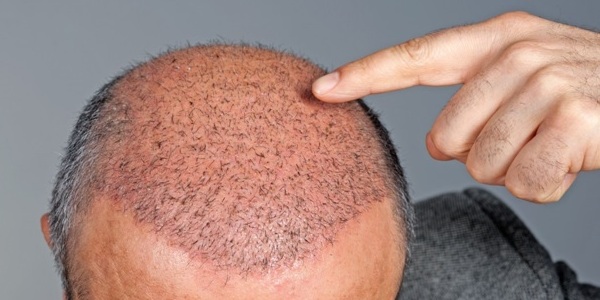Hair transplant has helped helpless people for a long time. With the advent of FUE hair transplant, it has become quite easier to grow hair at bald areas of the scalp, face, and body. It is not a complicated procedure now; the latest technology has made it smooth and simple. This article discusses how hair transplant treatment work.
If you want to grow hair on your thin or bald areas, this topic is for you.
Important Hair Transplant Facts
Around the world, hair loss problem wreaks havoc to hundreds of millions. With the number of hair loss victims rising, experts are more concerned than ever to come up with an economical and simple hair restoration treatment. There are different treatments to fix hair loss problem.
Around the world, a whopping 50% of women and 60% of men suffer from a type of hair loss problem. Topical, minimally invasive, and surgical options can be used to address hair loss, hair thinning, and baldness. An FUE hair transplant is a surgical method for hair restoration.
Does it Work?
The one word answer is ‘yes.’ It is true that FUT and FUE hair transplant works for people who experience hair fall due to various reasons. The type of results varies from person to person due to different reasons. The price also differs in different cases.
In the past, a hair transplant treatment used to be a hectic and much surgical procedure. A great breakthrough occurred in the near past that changed the way it works. With the successful trials of follicular unit extraction (FUE) method, it became quite easier to grow hair on bald and thin areas.
Hair Transplants Cost
Understanding FUE hair transplant cost has not been easy due to different factors. Some clinics or hair restoration surgeons write fixed costs in advertisements but pricing is not fixed in reality.
Actually, the cost of hair transplant depends on various factors that are variable. The people who opt FUE pay a different price than the people who select FUT. Hair transplant cost normally depends on the following factors:
- Hospital or Clinic Charges: The cost of the procedure depends on the geographic location and quality of the treatment facility.
- Hair Restoration Surgeon’s Fee: The pricing heavily relies on the qualification, experience, and reputation of the doctor.
- Number of Grafts (Hair) Required: The cost is calculated after identifying how many grafts need to be transplanted.
- Hair Transplant Technique Selected: The choice of hair restoration technique is also considered while quoting the price.
- Anesthesia and Miscellaneous Charges: The procedure involves surgery and local anesthesia is administered beforehand to avoid pain and discomfort. Some treatment centers charge for blood and other tests separately.
How Does it Work?
You will find it simple to perform hair transplant using the FUE technique. Across the globe, people prefer the follicular unit extraction (FUE) method to regrow hair. This option costs a bit more than the alternative method known as follicular unit transplantation (FUT).
In simple words, FUE allows hair transplant surgeons to remove follicular units from the donor area of the scalp, prepare it for reuse, and implant it at the recipient area of the scalp. The hair can also be taken from any area of the face or body.

Downtime/Recovery Period
Unlike FUT technique, the FUE technique involves short downtime and fewer side effects. That is why people feel fewer problems after having an FUE hair transplant. FUT hair transplant is also fine; its method is different and the surgery portion is bigger in it. The patient may have to follow the following instructions:
- Use medications to fight pain and discomfort
- Use antibiotics to prevent infections/complications
- Use anti-inflammatories to avoid swelling and bruising
- Sleep in the upright position first night after the surgery
- Use topical hair growth medications to trigger hair growth
Notable Side Effects
The FUE hair transplant comes with great benefits but some minor or temporary side effects also exist. The list below shows some notable side effects and risk of complications of hair transplant:
1. Scalp pain
2. Scalp itching
3. Scalp infections
4. Treatment site bleeding
5. Treatment area swelling
6. Treatment area pus drainage or crust
7. Hair follicles’ Inflammation (folliculitis)
8. Loss of sensation around the surgical sites
9. Continued hair loss if it has not already stopped
10. The texture of new hair is different than the previous hair
It is not just hair transplant, the topical medications such as Minoxidil and Propecia can cause the following side effects:
- Dizziness
- Chest pain
- Headaches
- Irritated Scalp
- Breast swelling
- Sexual dysfunction
- Irregular heart rate
- Hand and foot swelling
Finding a Surgeon
Above all, choosing the right professional is of the utmost importance. A hair transplant surgeon or hair restoration surgeon is a medical doctor that has been trained as a hair transplant professional. So make sure you take care of the following while selecting your doctor:
- Qualification: Some people are just hair transplant technicians but they claim to be a hair transplant surgeon. Make sure you choose a professional who is a medical doctor and has training in the relevant field. If your profession is a medical doctor too, she or he is better.
- Experience: Experience matters a lot in all medical treatments. Though hair transplant is not as complicated as other cosmetic procedures, experience makes a doctor deliver better results. You can check what type of surgeries has that doctor performed and what the results were.
- Reputation: A reputed professional may charge a bit more but there are many reasons to select such kind of notable surgeons. There may be hundreds of hair transplant professionals in your area standing out as a reputed name is not easy. A reputed person can do it with perfection.
The End Result
It is true that knowledge is power and a professional can guide you on how to make the best use of the knowledge you collect online. By consulting an expert, you will be able to know how you can reap the benefits of this treatment.
It is now time to schedule an appointment with the nearest professional. Contact the nearest provider and learn how a hair transplant is going to help you.
At www.myinfoexpert.com, we are not affiliated with any products/services & neither do we recommend those brands, sub-brands or products in any manner. Our Main Aim is to enrich our readers with Research Tips & valuable Information to our readers. We are not liable for any type of content/information shown or advertised on our platform.
*Readers are advised to proceed further at their own risk, while/if buying a product/service.
I’m Jimish Shah a professional blogger, digital marketer, and content marketer also with over 8 years of experience. My focus is on providing the most researched information to new startups, entrepreneurs, freelancers, and bloggers. My objective is to educate the youth of today on a broad range of subjects.





